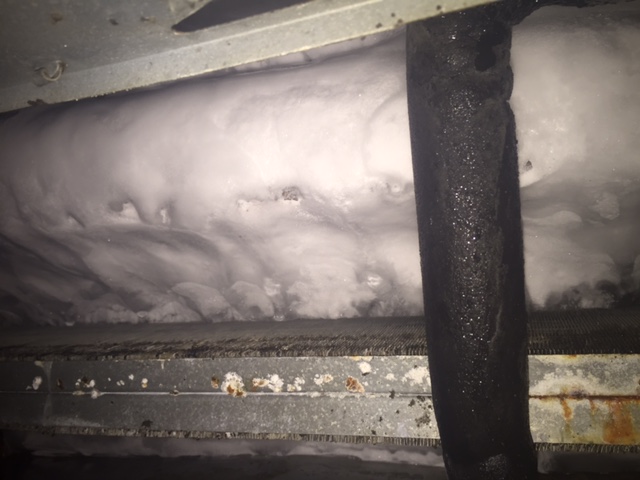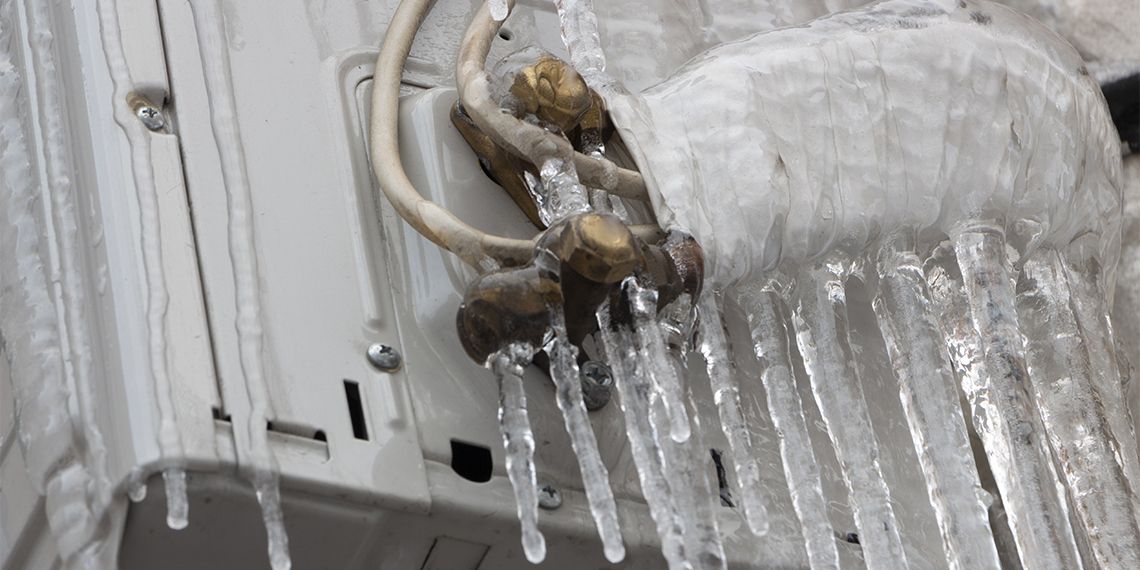Steps to Take When Your AC Pipe Freezes: Comprehensive Handbook
Steps to Take When Your AC Pipe Freezes: Comprehensive Handbook
Blog Article
On this page below you might get some good quality points around Have a Frozen AC Line? Here’s How to Fix It.

Intro
Discovering that your air conditioning pipe is iced up can be concerning, especially during warm summer season when you rely upon your air conditioning unit the most. Recognizing what to do in such a circumstance is vital to avoid additional damages to your cooling system and ensure your convenience inside your home.
Comprehending the Causes
Numerous factors can contribute to the freezing of an air conditioning pipeline. Comprehending these reasons can assist you deal with the concern successfully.
Lack of Airflow
One common source of an icy AC pipe is inadequate airflow. When the airflow over the evaporator coil is restricted, it can trigger the coil to drop below freezing temperature, resulting in ice development on the pipe.
Low Refrigerant Levels
Inadequate cooling agent levels in your air conditioning system can additionally cause an icy pipe. Low refrigerant degrees can cause the pressure in the system to drop, leading to the freezing of dampness on the evaporator coil.
Cold Weather Conditions
In cooler climates, freezing temperatures outside can contribute to the freezing of AC pipes. If your a/c unit is not correctly protected or if there are leakages in the ductwork, cold air can penetrate the system, triggering the pipeline to ice up.
Dirty Air Filters
Unclean or clogged up air filters can restrict airflow in your air conditioning system, bring about numerous problems, including an icy pipe. It's essential to change or clean your air filters consistently to ensure correct air flow and protect against ice buildup.
Signs of a Frozen AC Pipe
Identifying the signs of a frozen air conditioning pipeline is vital for prompt action.
Decreased Airflow
If you observe a considerable reduction in airflow from your vents, it could indicate a frozen pipe.
Ice Buildup on the Pipe
Noticeable ice build-up on the refrigerant line or the evaporator coil is a clear sign of an icy air conditioning pipeline.
Unusual Sounds from the Unit
Uncommon audios, such as hissing or bubbling, coming from your air conditioning device can signal that there's ice existing on the pipe.
Immediate Actions to Take
When confronted with an icy air conditioner pipeline, it's vital to act quickly to prevent more damages to your cooling system.
Shutting off the air conditioner
The primary step is to turn off your air conditioning system to stop the system from running and intensifying the issue.
Looking for Blockages
Check the area around the indoor device for any kind of obstructions that may be obstructing airflow, such as furniture or curtains.
Defrosting the Pipe
You can use mild techniques like positioning towels soaked in cozy water around the frozen pipe to assist thaw it gradually.
Preventive Measures
Taking safety nets can assist avoid future occurrences of an icy AC pipe.
Regular Maintenance Checks
Schedule routine maintenance talk to a specialist HVAC specialist to ensure that your air conditioner system is running efficiently.
Changing Air Filters
On a regular basis replace or clean your air filters to stop air flow restrictions and preserve optimal efficiency.
Protecting Exposed Pipes
If your air conditioning pipelines are subjected to cool temperature levels, consider shielding them to prevent cold throughout winter season.
Looking For Professional Help
If DIY techniques fall short to deal with the concern or if you're unsure concerning how to proceed, it's ideal to seek support from a certified HVAC technician.
When DIY Methods Fail
If your attempts to thaw the pipeline or address various other concerns are not successful, it's time to call in a professional.
Value of Hiring a Professional HVAC Technician
A licensed HVAC professional has the know-how and tools needed to detect and repair problems with your a/c system securely and successfully.
Verdict
Dealing with a frozen air conditioning pipe can be an aggravating experience, yet understanding how to respond can aid minimize damages and bring back comfort to your home. By recognizing the causes, acknowledging the indications, and taking punctual action, you can efficiently deal with the problem and protect against future events.
What to Do If Your AC Line Is Frozen
Make Sure All Supply and Return Air Vents Are Open
If you notice problems with airflow, the first thing you should do is check your supply and return vents. Supply vents distribute clean, conditioned air throughout your home. As this air becomes stale, it’s pulled into the return vent, where it’s reconditioned before being sent back out through the supply vent.
When these vents are closed, air won’t flow in the home. Before examining your AC, check the vents in every room and ensure they’re all open.
Check for a Dirty Air Filter
Another possible cause of limited airflow is a dirty air filter. Your air conditioner’s filters catch elements you don’t want to breathe in, such as dirt and dust. Over time, filters can become clogged, ultimately blocking air from flowing in and out. The lack of airflow can then cause the entire coil to freeze and will completely restrict any air from moving through it. The AC may need to be powered off for one to two days to allow the coil to thaw after replacing the filter to allow proper functioning of the unit. This debris can also accumulate on your AC’s evaporator coil, requiring a more serious repair. In general, air filters should be cleaned regularly (about every two weeks).
Assess Your Outdoor Unit
In addition to checking your AC, assessing the outdoor unit is a good idea. Also known as the condensing unit, it works with your interior unit to release heat outside. An issue with the outdoor unit can result in rising internal temperatures.
Overgrown Shrubs or Clogged Leaves
From leaves and twigs to shrubs and debris, there’s no shortage of outdoor elements that can accumulate around your condensing unit. When these elements get lodged inside the unit, they can block airflow. Fortunately, removing the blockage can solve the problem.
Sounds of a Broken Fan
Shrubs and leaves aren’t the only things that can impede your outdoor unit’s airflow. If the fan is broken, the unit won’t be able to properly get rid of heat — which means the internal temperature won’t go down. First, make sure the fan is spinning. If it is, check for the following sounds of a broken fan:
Buzzing Rattling Screeching Hissing Clicking Preventative Measures
Nobody wants to deal with a frozen AC line. In addition to causing problems with your air conditioner, they require professional repairs. On the bright side, there are preventative measures you can take to help ensure this issue doesn’t arise in the first place.
https://www.coopergreenteam.com/blog/what-to-do-if-ac-line-frozen

Do you like reading about Why Is Ice On My Outside Air Conditione? Create feedback below. We'd be delighted to listen to your views about this write up. Hoping that you visit us again in the future. Loved our blog posting? Please share it. Help another person locate it. Thank you for going through it.
Explore Report this page